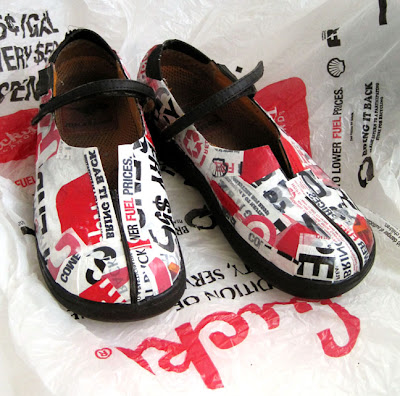 |
| Assortment of award ribbons |
 |
| Close-up of gorgeous, rusted bottle cap |
 |
| Close-up of bottle cap |
And now for the how-to:
First, sort through your ribbons and find one piece of wide ribbon 12 inches long, and a piece of narrower ribbon 10 inches long. Form each piece of ribbon into a loop and seam the ends together as shown below. Then stitch along the inside edge of the loop, pull to gather, and secure with a knot.
 |
| Make gathered ribbon loops |
Cut out a piece of felt the same size as your bottle cap.
Stitch felt to back of the wider, 12-inch gathered ribbon.
 |
| Gathered ribbon stitched to felt |
Turn to right side. Place second, narrower, ten-inch gathered circle on top of the first and stitch as shown below (but wait to glue bottle cap on until the very final step).
On back of pin, sew pin clasp in place (you could always use a safety pin in a pinch), and sew down trailing ribbons. The trailing ribbons can be any length and width that pleases you.
As noted, the final step is to glue your bottle cap onto the front of the award. I've used silicone but a glue gun would work well. You could use something other than a bottle cap, such as a button or other found object.

















































